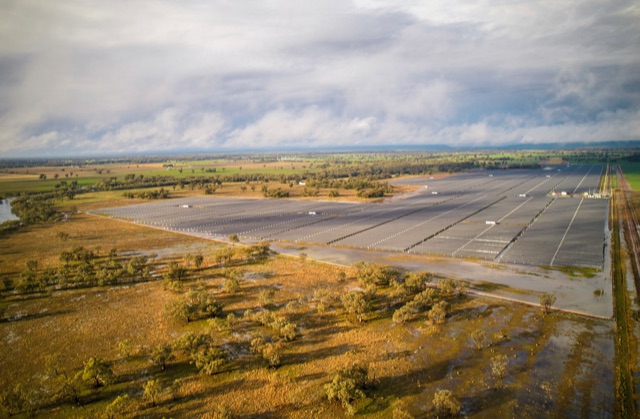Mining giant Rio Tinto has flagged potential off-take deals for large scale wind and solar projects for its Queensland assets as it looks to accelerate its role in the transition to a low carbon economy.
The shift to renewables was flagged in a joint statement with the Queensland government on Tuesday heralding support for a shift to green energy and green industry. Rio Tinto is the state’s biggest single energy consumer, mostly from its Boyne Island aluminium smelter near Gladstone.
“We are working closely with the Queensland Government on the role we can play by underwriting long-term green offtake for our industrial assets,” Rio Tinto CEO Ivan Vella said in the joint statement.
“This should help create the industrial demand needed to develop a globally competitive green energy solution and lead to more processing and manufacturing in central Queensland.”
There were no further details, but the change in tone from Rio Tinto – which has previously suggested that the future of the smelter was on “thin ice” – follows a surge in aluminium prices, and a series of announcements on shifting power and manufacturing to green energy.
But it now appears destined to follow the country’s biggest aluminium smelter, Tomago in NSW, which is looking to be powered entirely by renewables by the end of the decade to ensure predictable, low cost power, and cut emissions to meet the demand of customers.
It also suggests that the potential industrial demand for large scale renewables in the state could run to many, gigawatts, given the size of the projects discussed.
In the past two days, the Queensland government has made two significant announcements with another iron ore major – Andrew Forrest’s Fortescue – for potential multi-gigawatt green hydrogen manufacturing facilities in central Queensland, and green ammonia production in Brisbane, along with Incitec Pivot.
The state government also announced on Tuesday a new renewable hydrogen project to combine solar, battery and hydrogen electrolysers to be built by the state owned generator CS Energy next to its Kogan Creek coal generator in the Western Downs.
“Transitioning to a low carbon economy presents a real opportunity for industrial regions if stakeholders are willing to both think differently and collaborate,” Vella said.
“As Queensland’s largest energy user and a major Gladstone employer and manufacturer, Rio Tinto is uniquely positioned to work with the Queensland Government to deliver this vision.”
The shift to renewables is accelerating across the region. Apart from Rio Tinto and Forrest’s Fortescue, the second biggest single energy customer in Queensland, the Sun Metals zinc refinery near Townsville, is also fast-tracking its transition to 100 per cent renewable energy supply, using wind, solar, batteries and hydrogen.
This would be the first investment or contracting for large scale renewables by Rio Tinto in Australia, although it has been active in smaller projects such as the recently announced expansion of its solar and battery project in Weipa, and the landmark Tom Price battery under construction in the Pilbara.
“This week we’ve announced the world’s largest hydrogen electrolyser manufacturing plant will be built in Central Queensland,” premier Annastacia Palaszczuk said in the statement.
“By backing Queensland to become a renewable energy and hydrogen superpower we will create and sustain jobs long into the future.”
Deputy premier and minister for State Development Steven Miles said the government ensure thatrenewable energy is used to power the industries and material that the world will need over the years ahead.
“This will demonstrate Queensland’s capability and attract investors looking to use clean energy to create their futures and the jobs that come with it.









